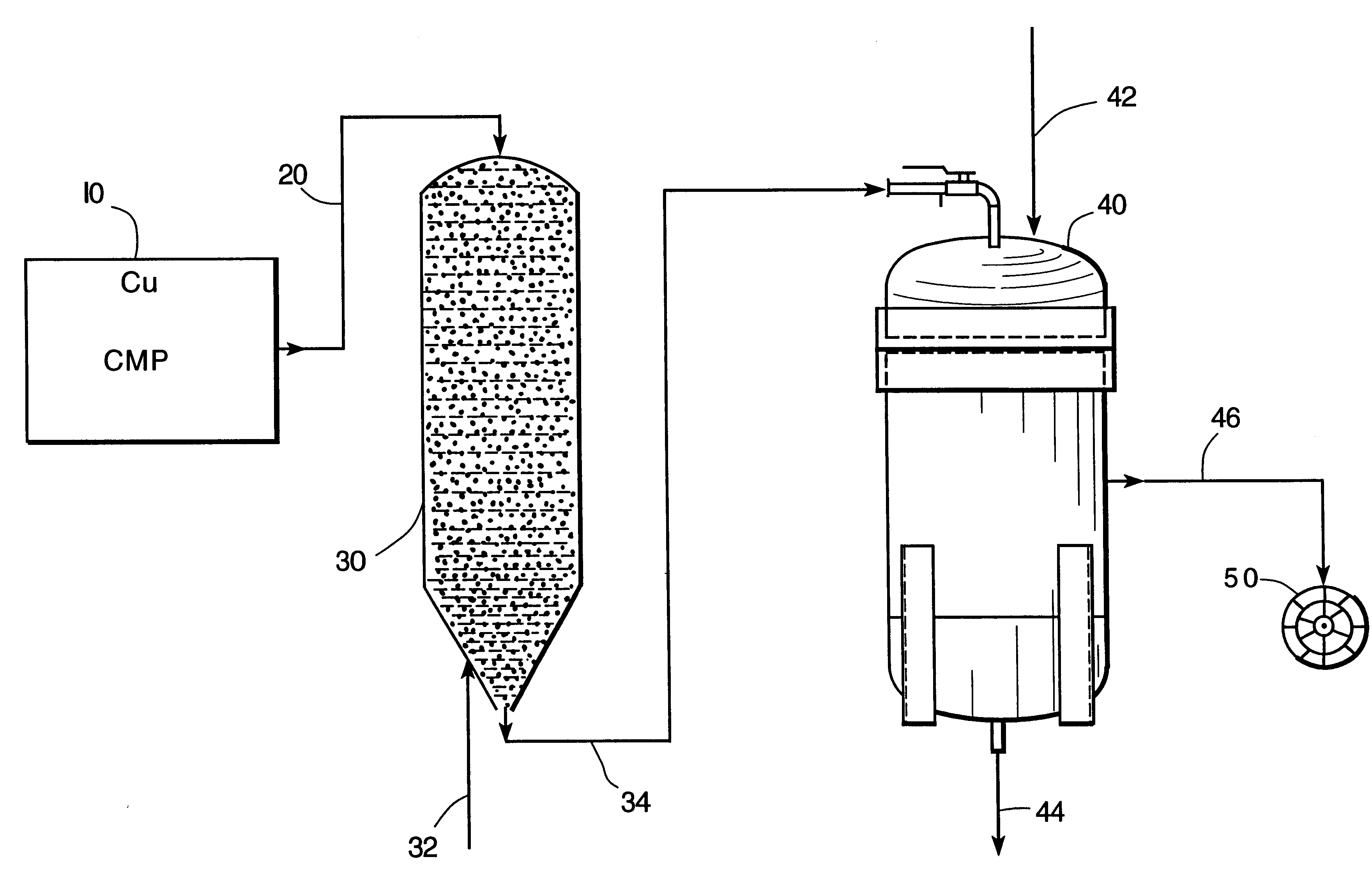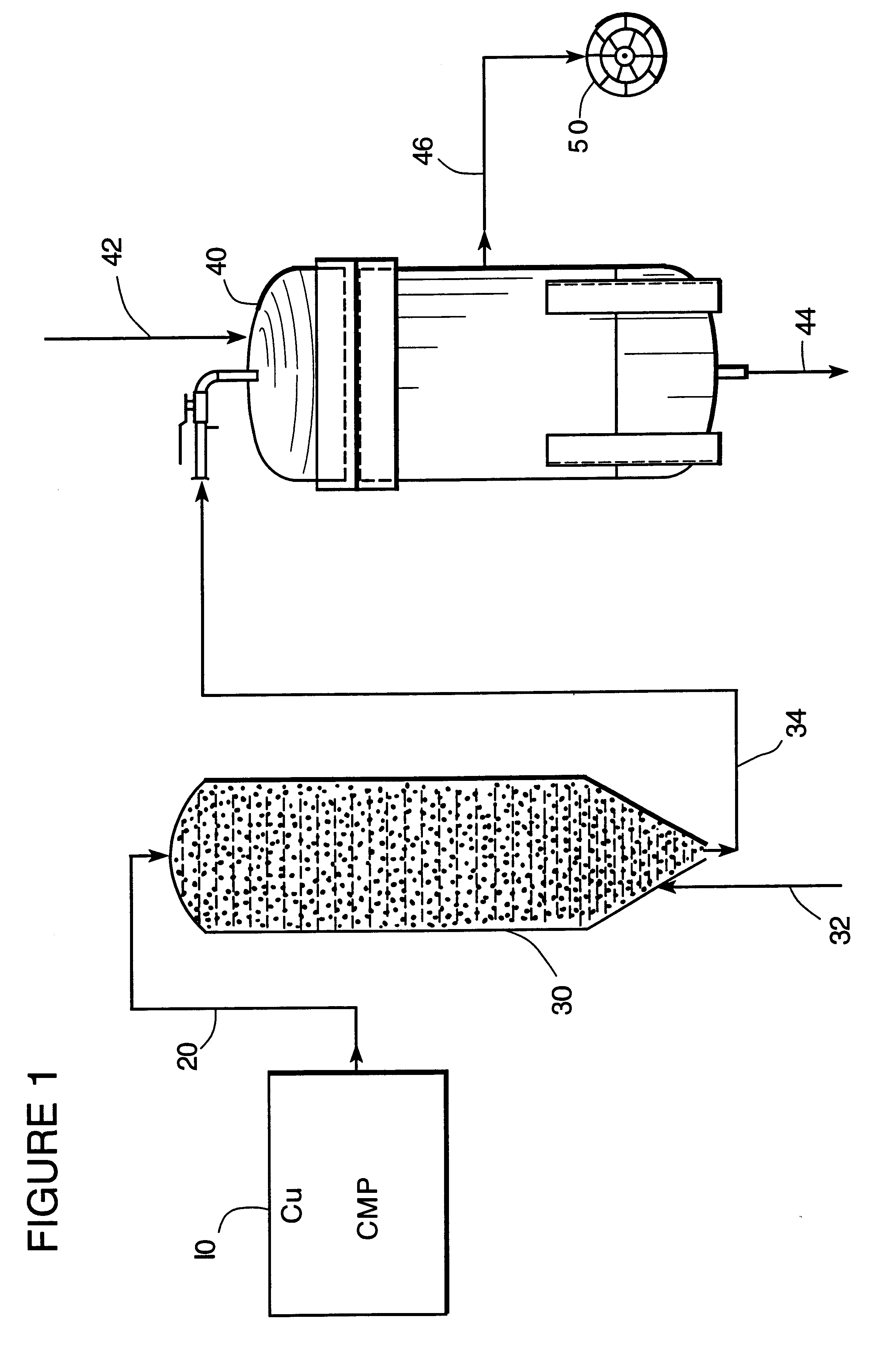Removing metal ions from wastewater
a technology of metal ions and wastewater, applied in water/sewage multi-stage treatment, water/sewage treatment by ion exchange, separation processes, etc., can solve the problems of large sludge volume, difficult precipitation of copper, and high cost of complexing agents
- Summary
- Abstract
- Description
- Claims
- Application Information
AI Technical Summary
Benefits of technology
Problems solved by technology
Method used
Image
Examples
example
A treatability study was conducted on a series of grinding wastes from a variety of chemical mechanical polishing (CMP) operations for producing integrated circuit semiconductor microelectronic chips. Treatments were performed on the CMP grinding wastes received from various integrated circuit semiconductor microchip manufacturers. Treatments were performed on the CMP grinding wastes to investigate and determine copper removal from an alumina slurry.
A novel method and apparatus provided a first step carbon adsorption removal of hydrogen peroxide from a wafer CMP planarization grinding waste combined with a second step chemical precipitation of complexed copper in the wafer planarization grinding waste. The wafer planarization grinding waste contained many particulate alumina solids which otherwise, i.e., if not for the copper, could be disposed via a municipal drain or sewer.
Samples used during this Example were CMP wastes associated with computer microchip manufacturing. Several sa...
PUM
 Login to View More
Login to View More Abstract
Description
Claims
Application Information
 Login to View More
Login to View More - R&D
- Intellectual Property
- Life Sciences
- Materials
- Tech Scout
- Unparalleled Data Quality
- Higher Quality Content
- 60% Fewer Hallucinations
Browse by: Latest US Patents, China's latest patents, Technical Efficacy Thesaurus, Application Domain, Technology Topic, Popular Technical Reports.
© 2025 PatSnap. All rights reserved.Legal|Privacy policy|Modern Slavery Act Transparency Statement|Sitemap|About US| Contact US: help@patsnap.com


